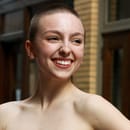It’s safe to say that the vast majority of Americans have grown up on cartoons. Generation Z has watched Phineas and Ferb, Frozen, and Toy Story, while Generation X watched Looney Tunes, Justice League, and Scooby Doo. Cartoons are meant to be goofy, entertaining, and family-friendly, but have come under fire for their character design. It seems that across studios, films, and TV shows, there are some harmful commonalities between characters that could be impacting us much more than we know.
Think of your favorite male animated characters. I think of Ferb, Kronk, and Shrek. All of these characters are undoubtedly masculine, but in different ways. Ferb is the smart, silent type who still gets to be desirable to women. Kronk is the goofy, comic relief with huge muscles. Shrek is the negative-thinking but charismatic oaf with a big belly. They all get to have physical flaws: Ferb is skinny, Kronk has huge shoulders, and Shrek has a giant belly with short legs. These characters do not look like real people, and that’s okay. There wouldn’t be much of a point to animation if it looked like the real world. The issue that I have taken with animated content is that men are allowed to have ridiculous looking bodies in many different ways, while women are not.
Think of your favorite female animated characters. My mind first goes to Jessica Rabbit, Pocahontas, and Tiana from ‘Princess and The Frog’. These characters also get to be goofy, smart, and heroic; but, their bodies also look undoubtedly fake. The issue arises in that nearly all female animated characters are made to look ‘fake’ in the same way. They all have impossibly small waists, flat stomachs, perky breasts, and skinny arms. To make things worse, these are the standards that young girls and women already face. It can be no surprise that young girls suffer from eating disorders and negative self image more than their male counterparts when all the animated media they consume advocates for the same, impossible body standards.
How can we fix this? Female animated characters need to have more diversity, and animators have already begun taking steps in the right direction. In the last decade, Disney released two movies with women of color as the main characters. This isn’t nearly enough representation, but it is a start. We need to show animated women on screen who are likeable characters, like Shrek, Kronk, and Ferb, who have ridiculous looking bodies in new ways.


